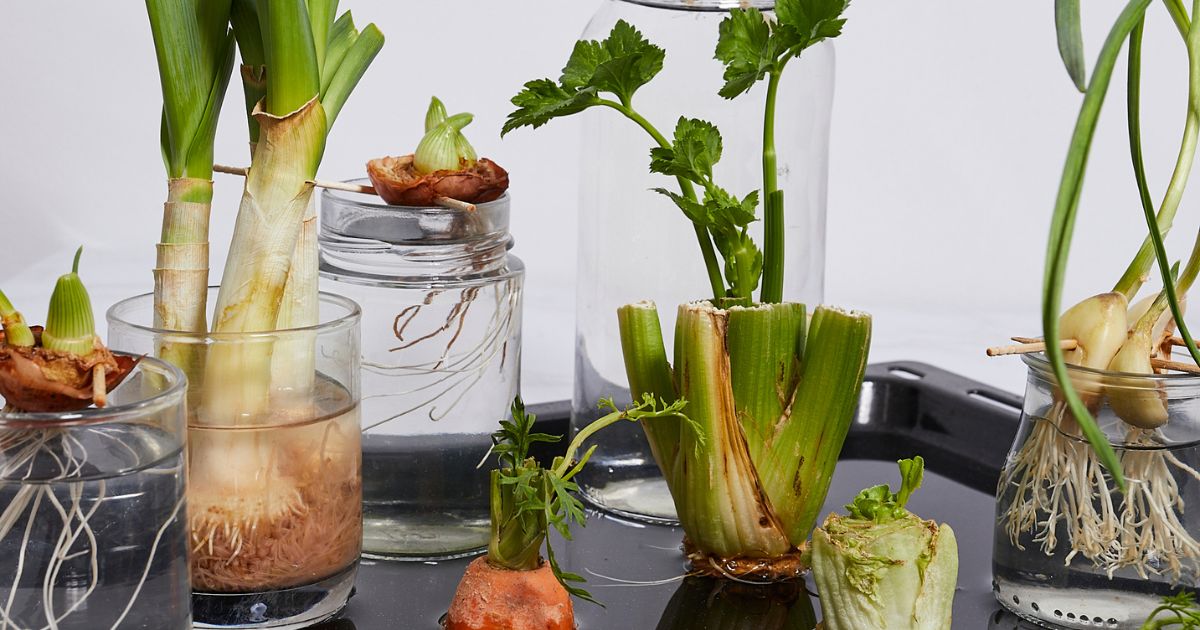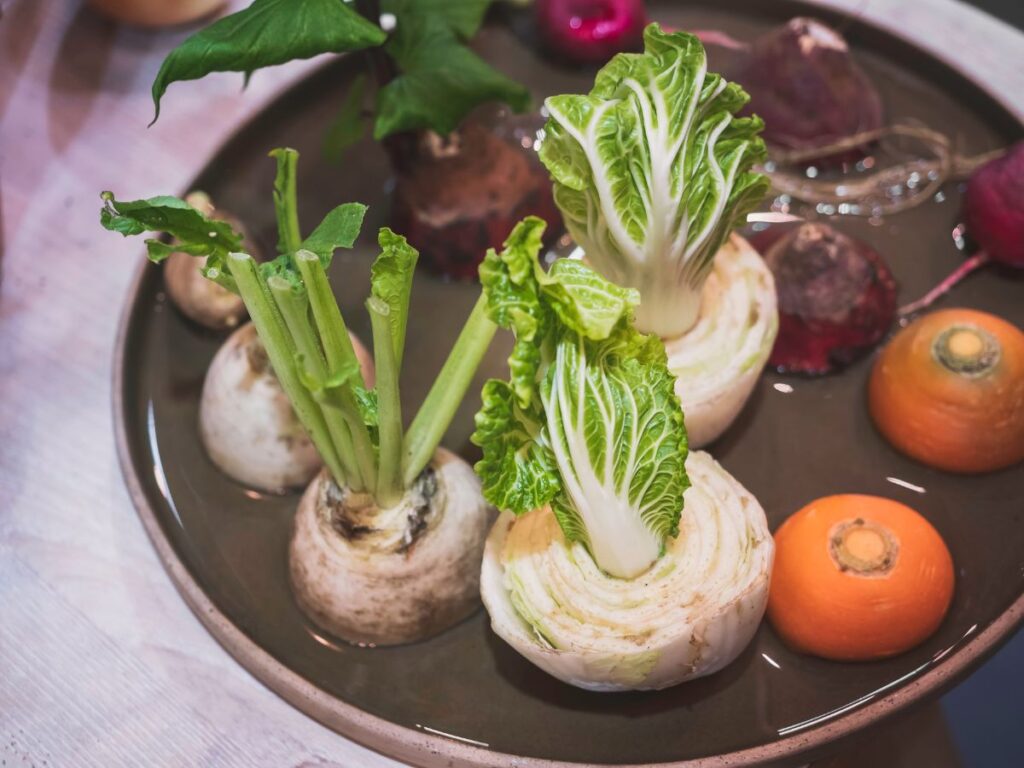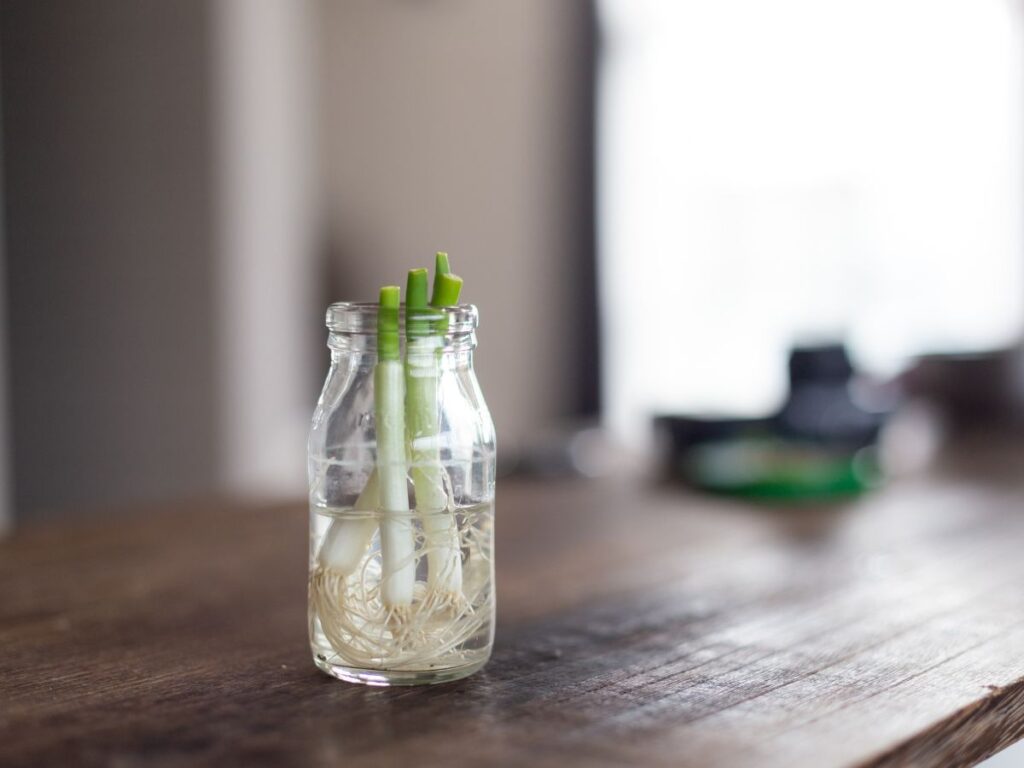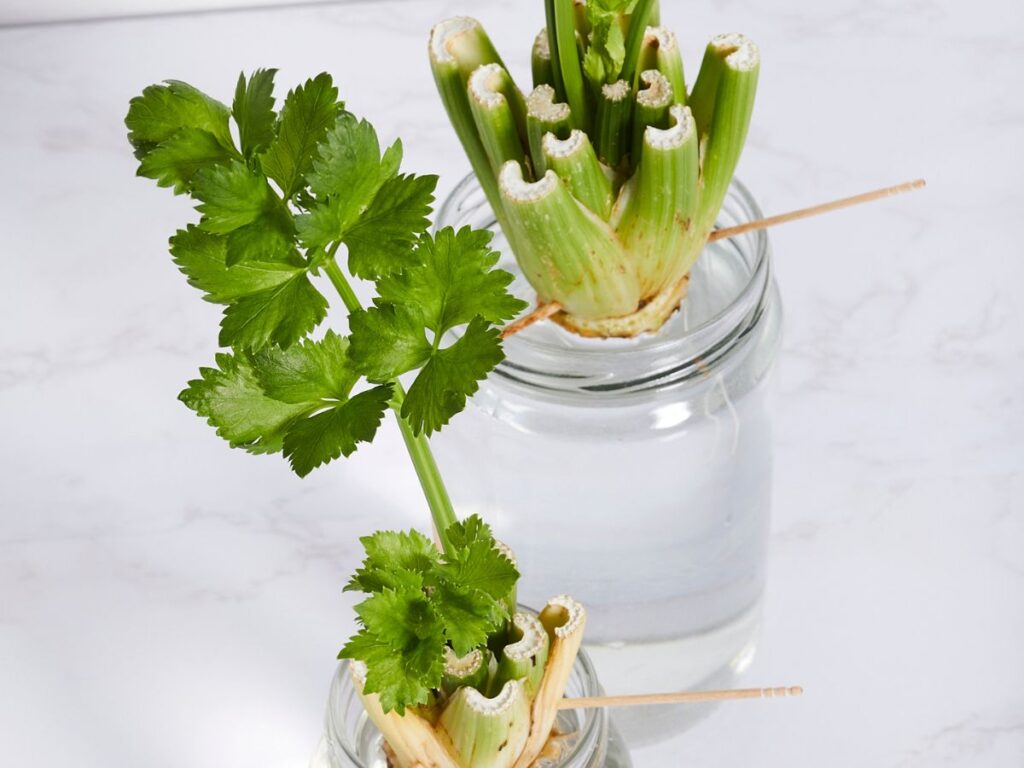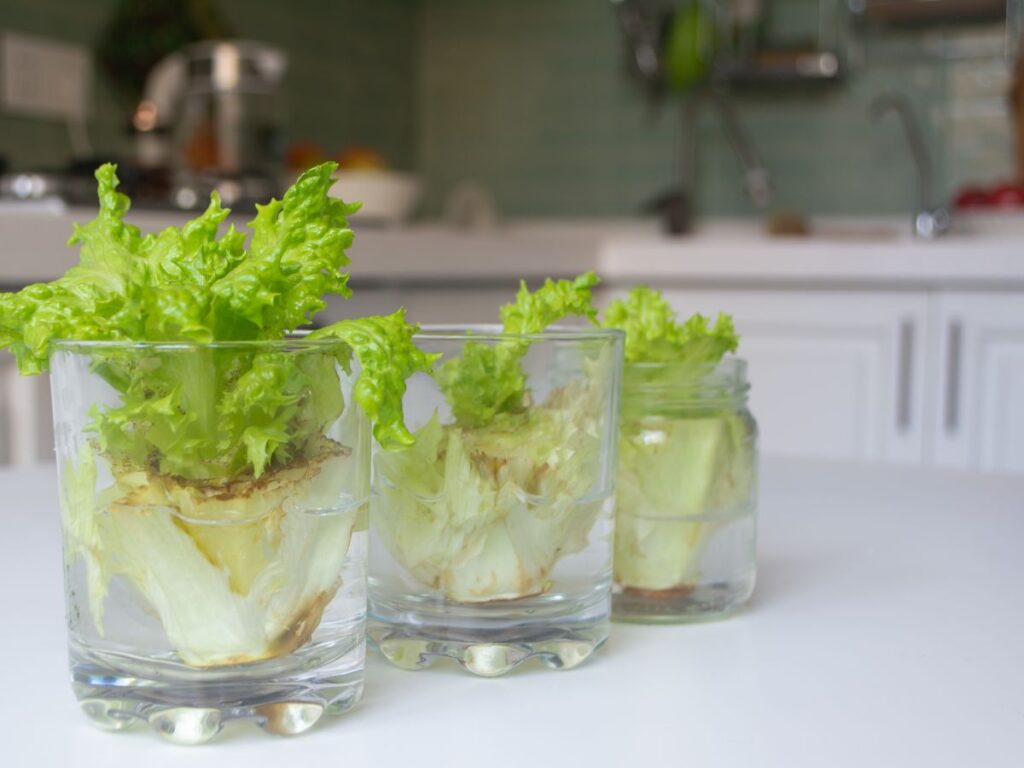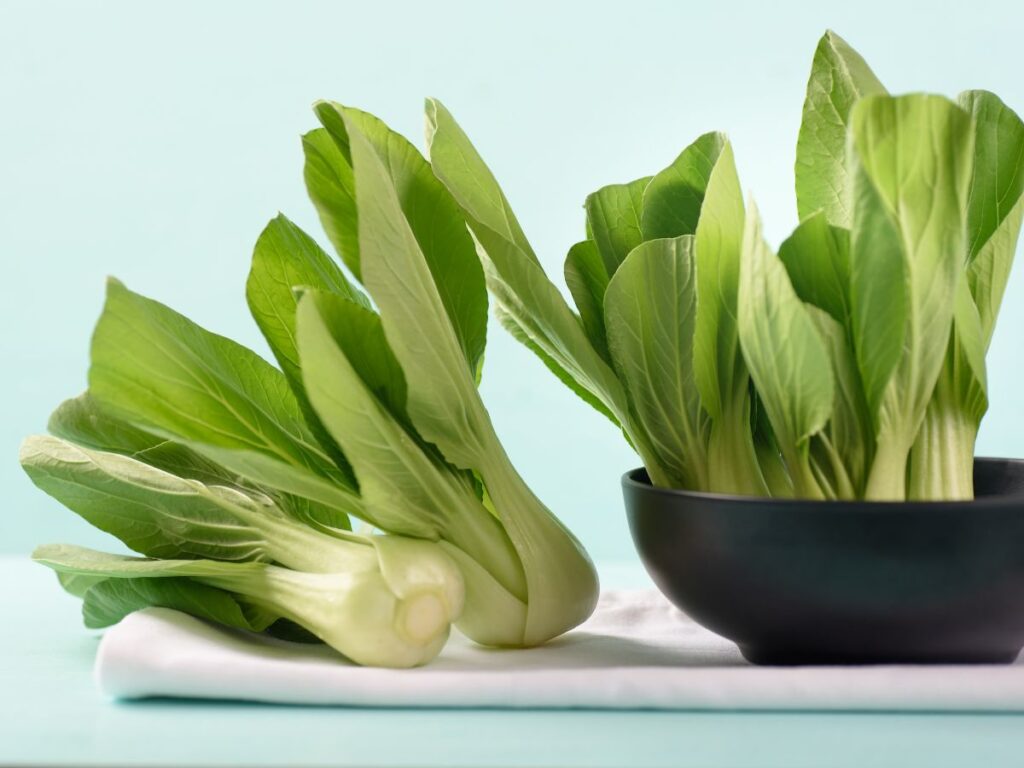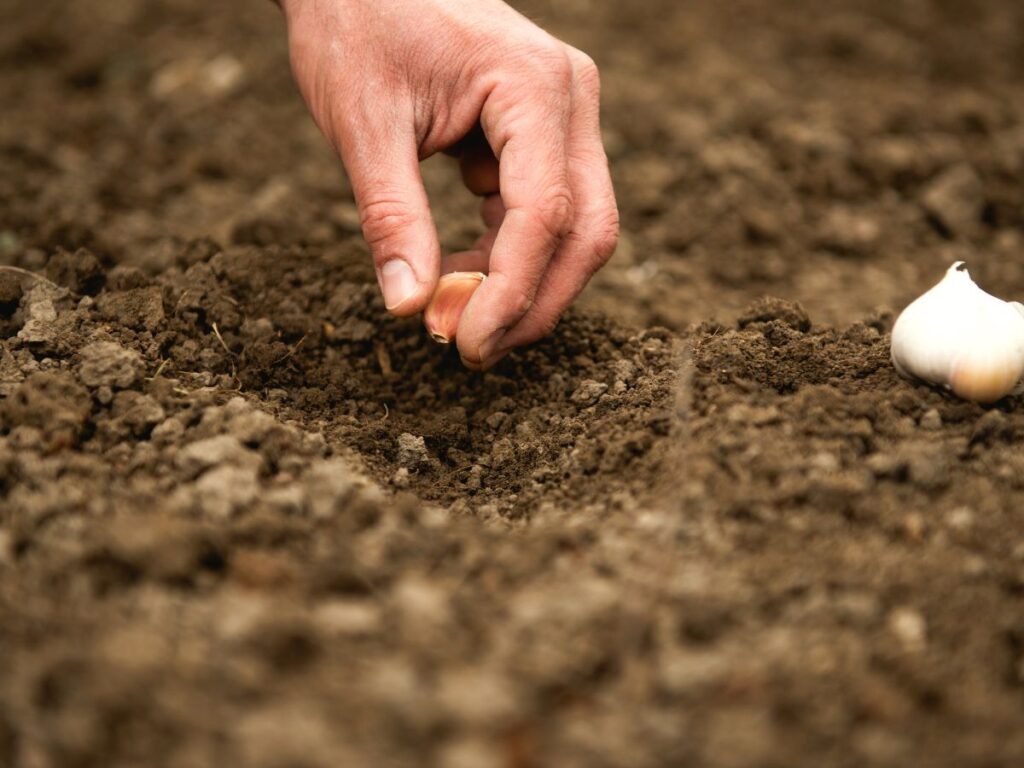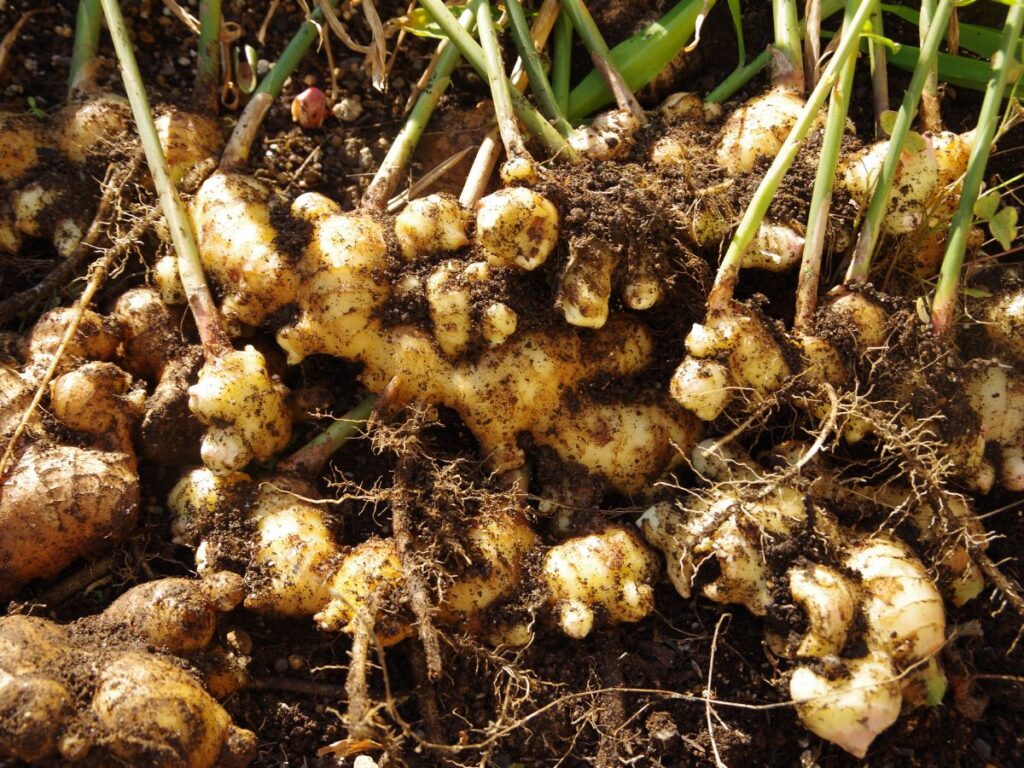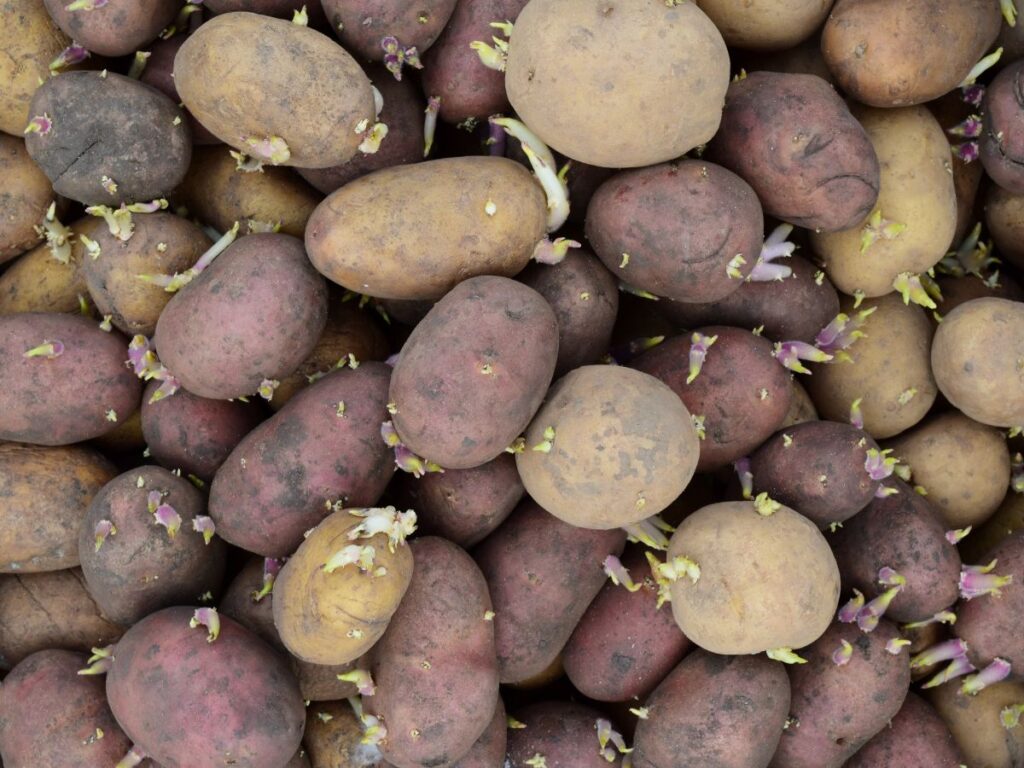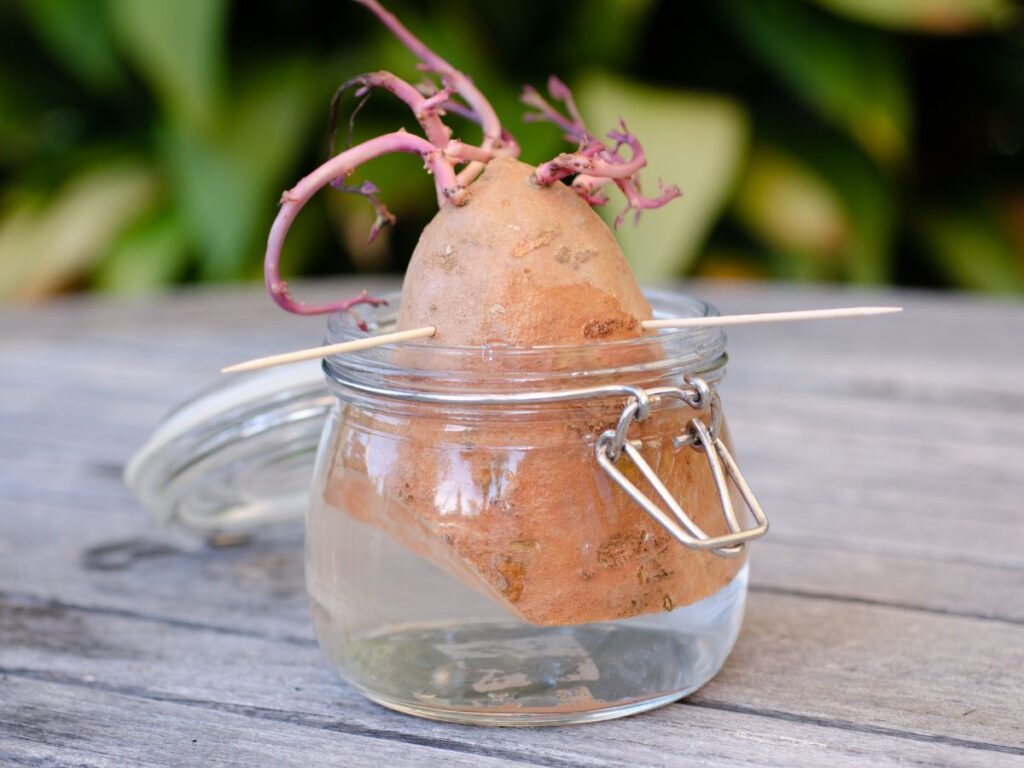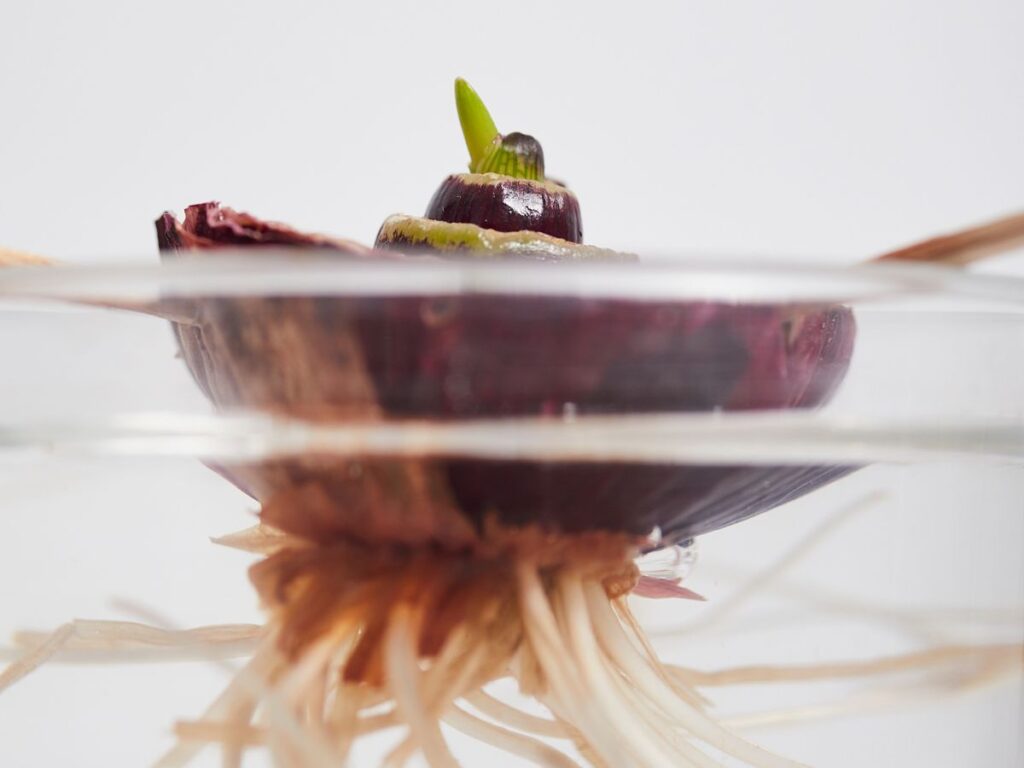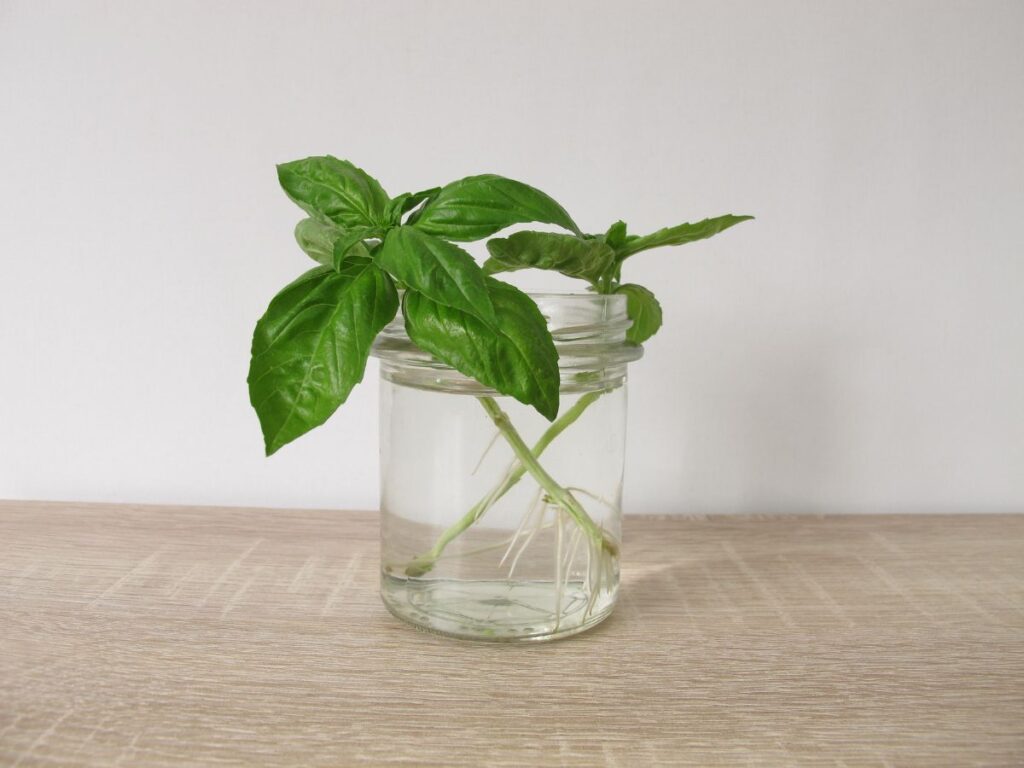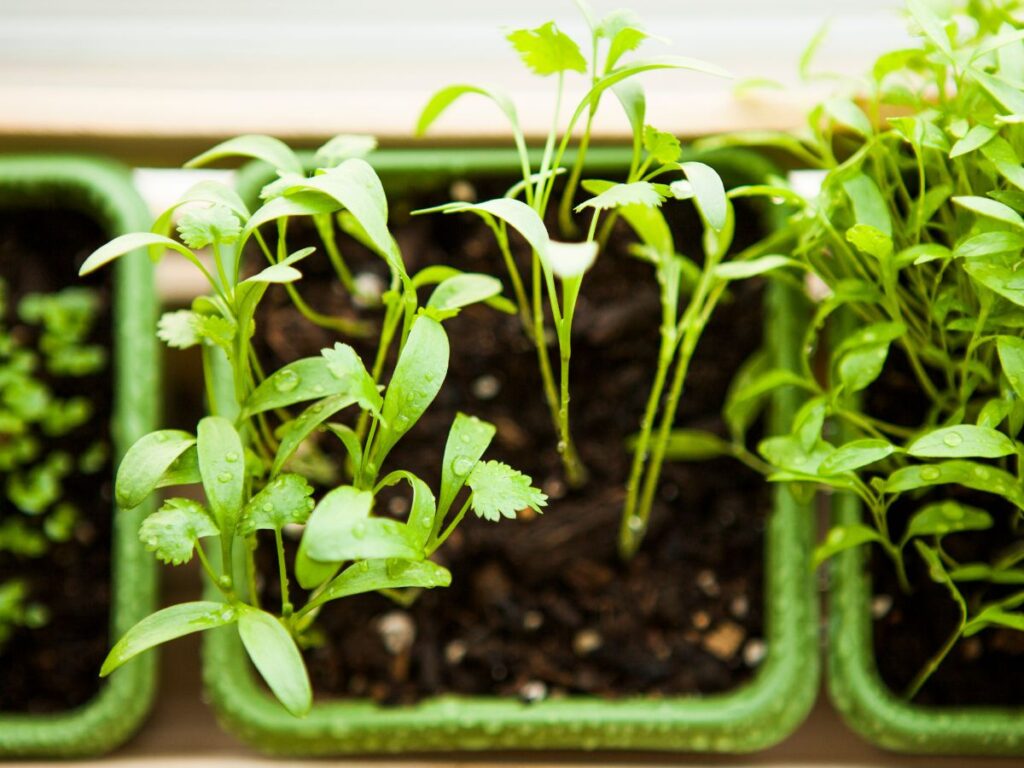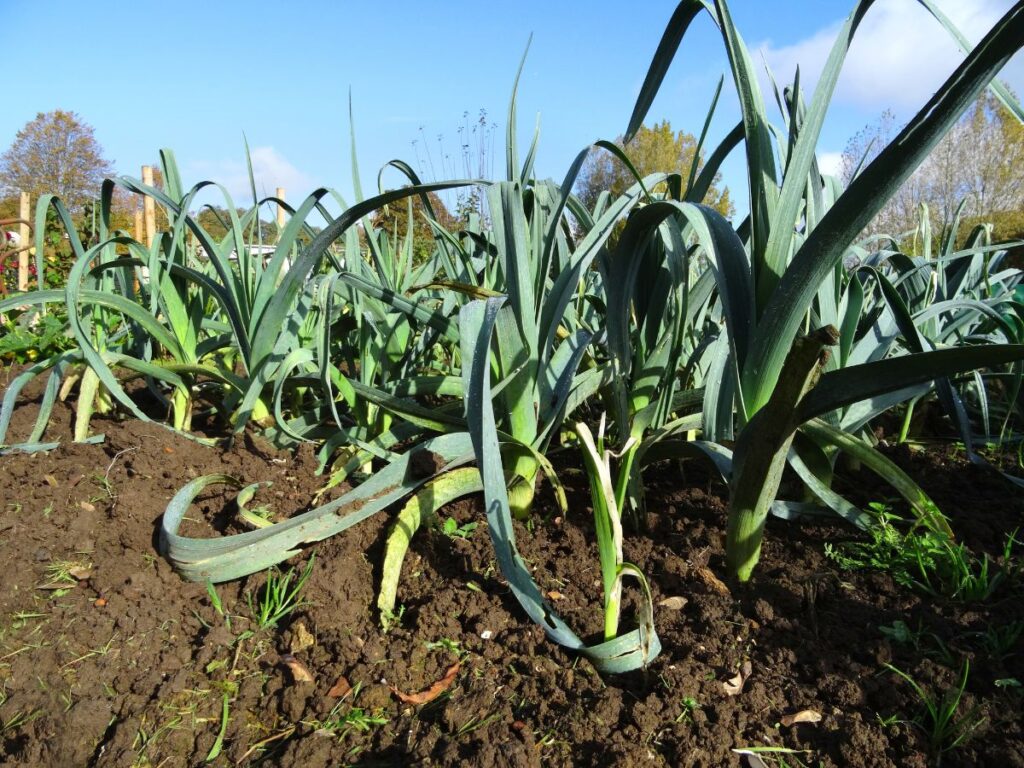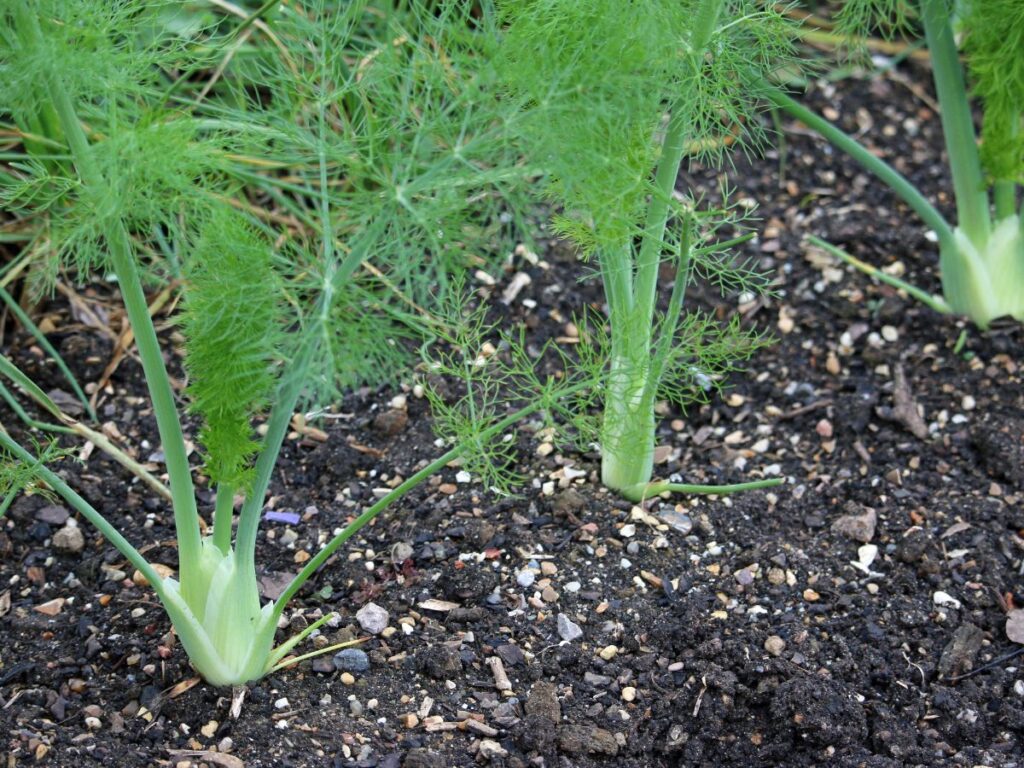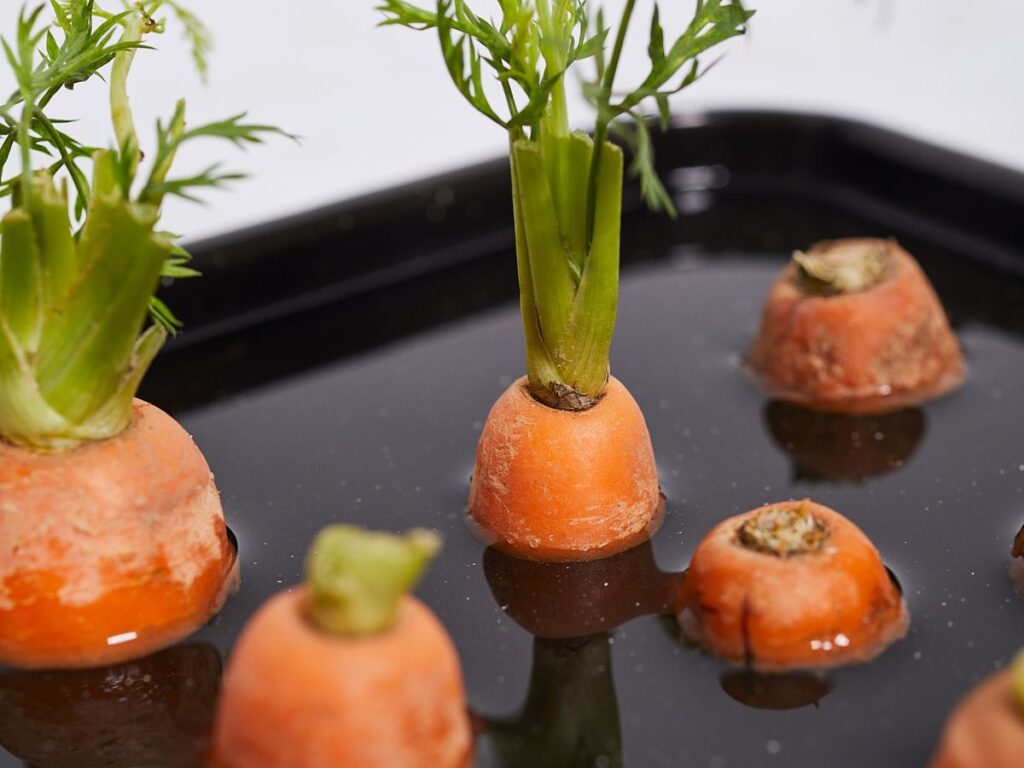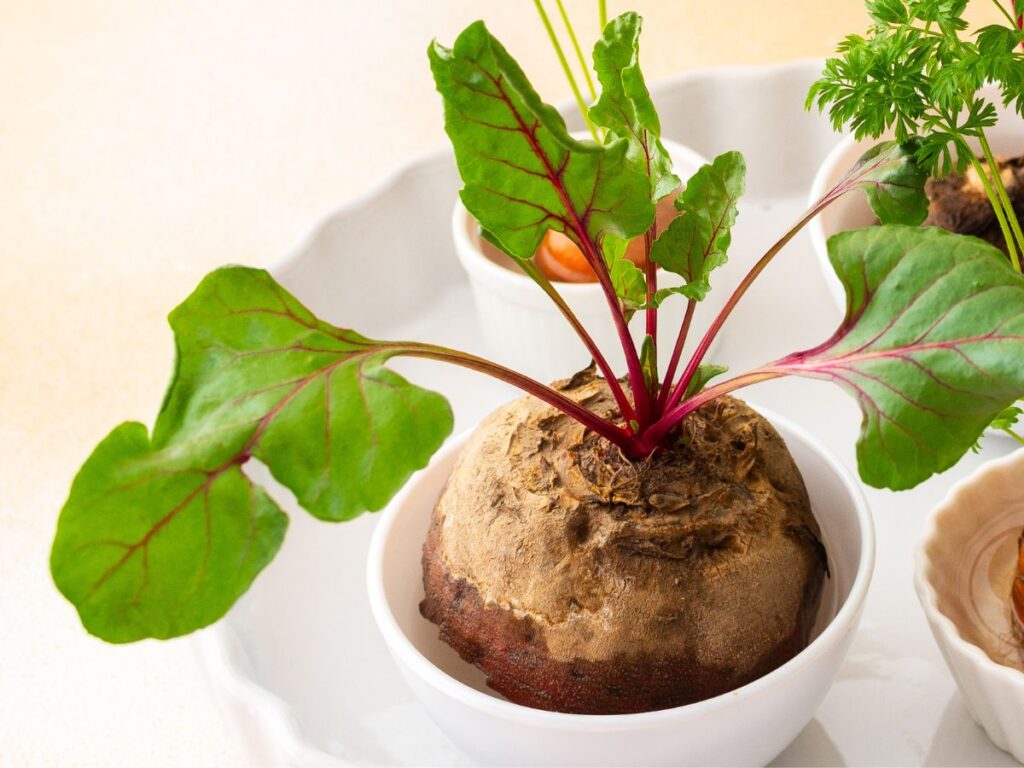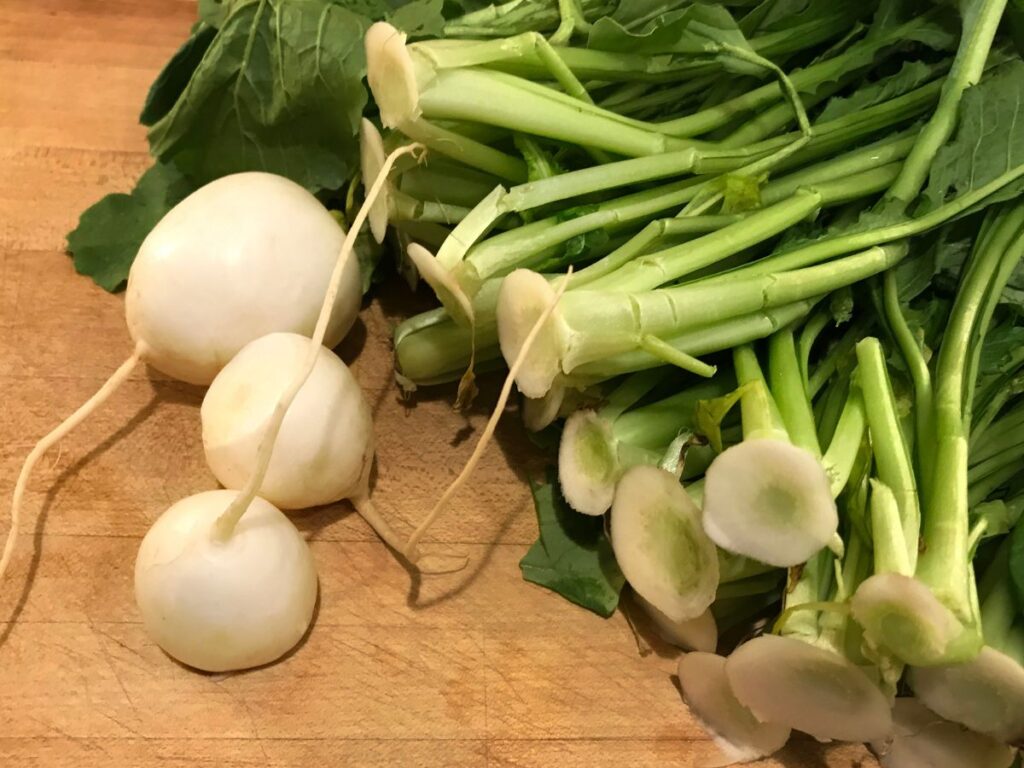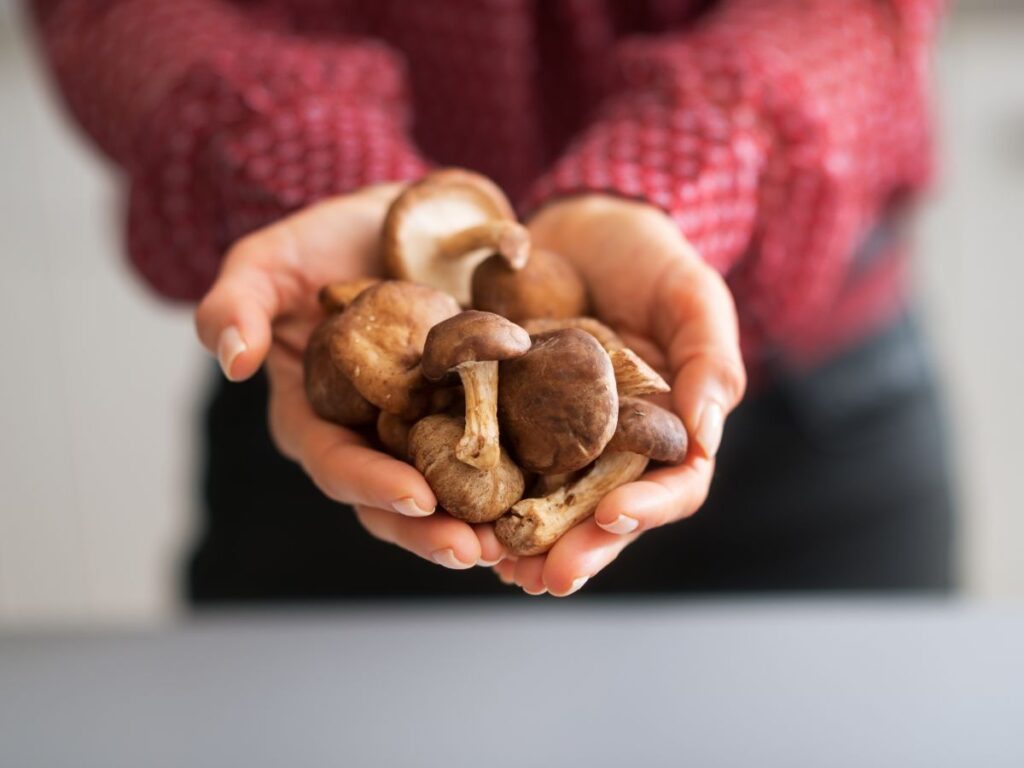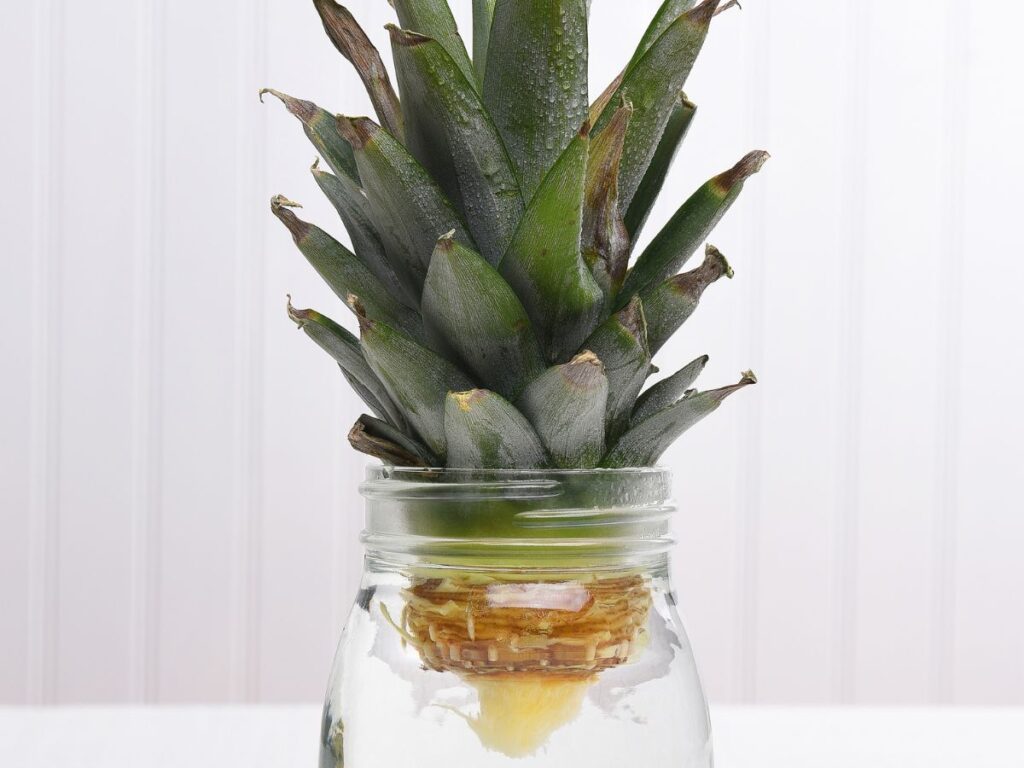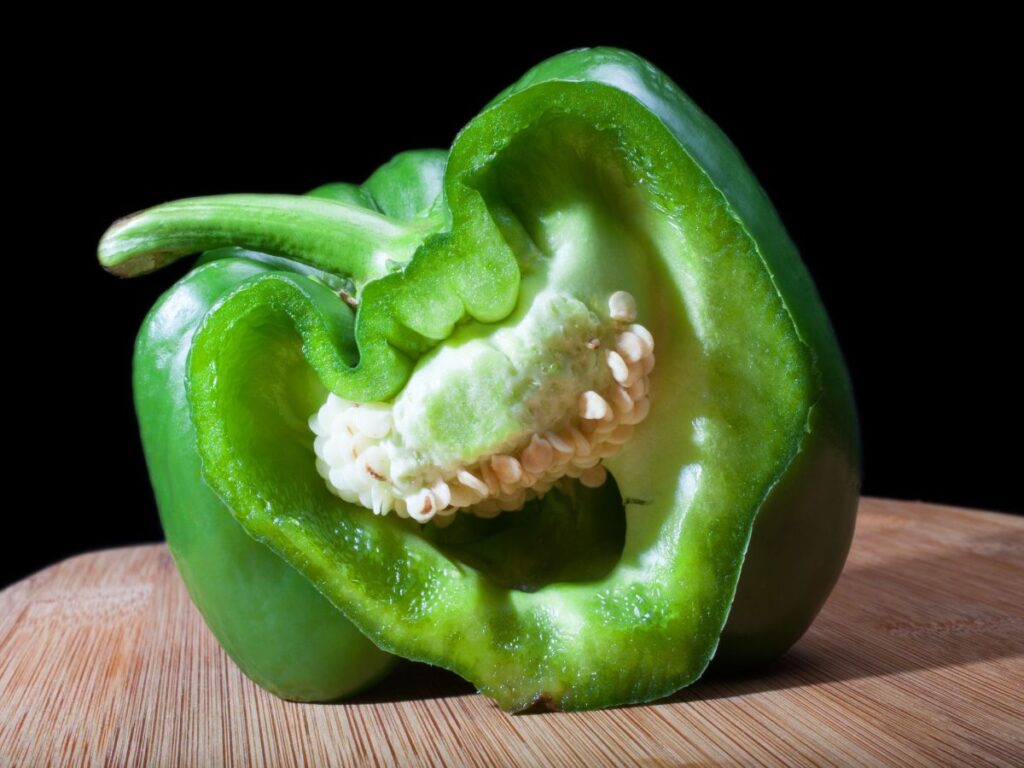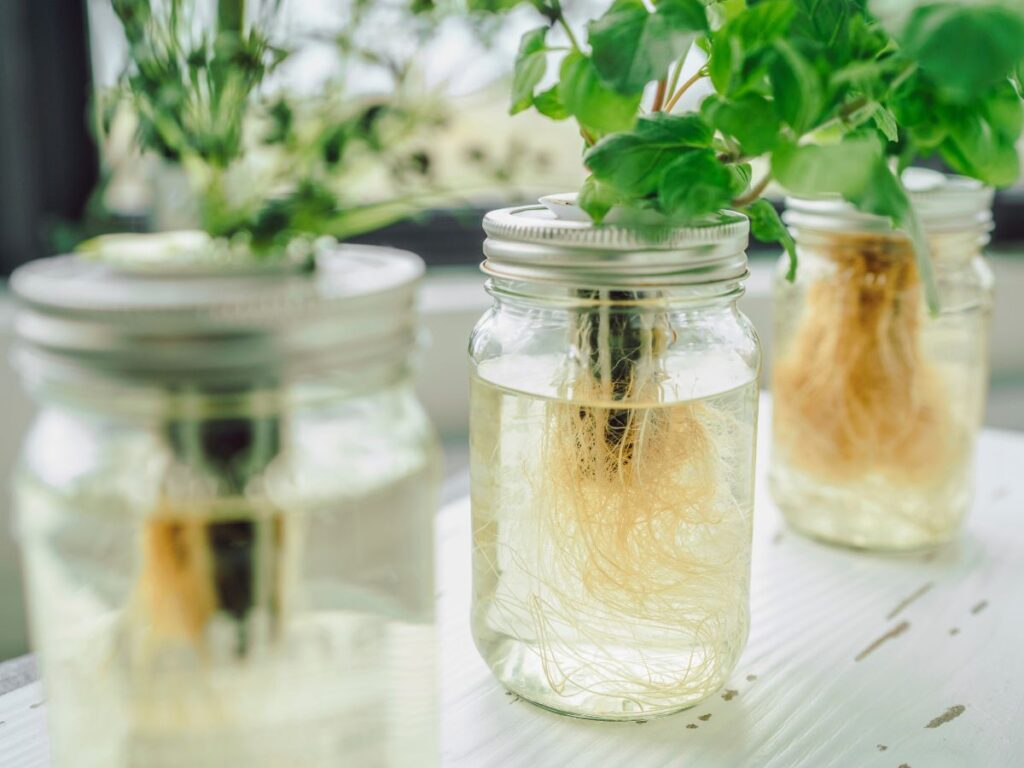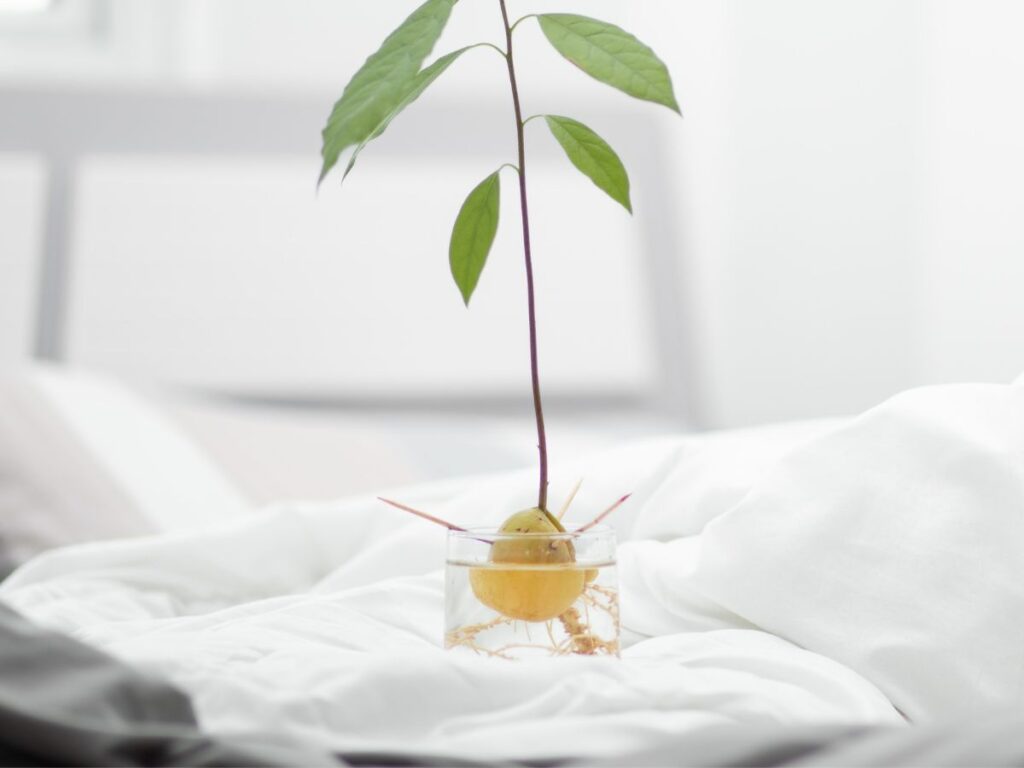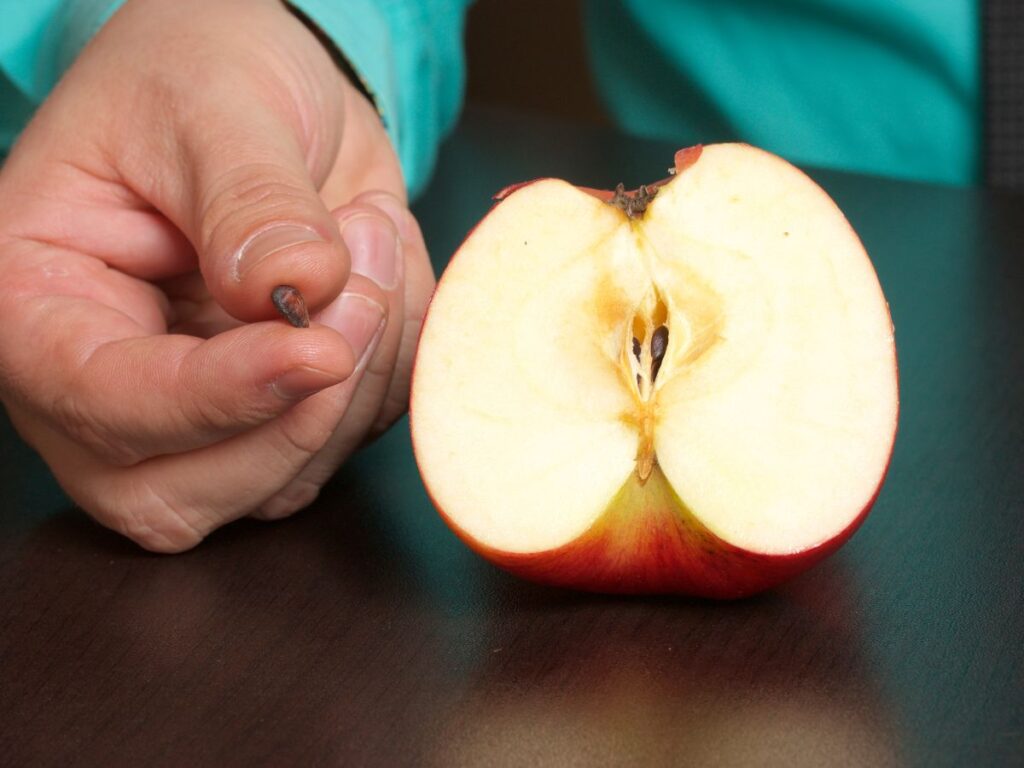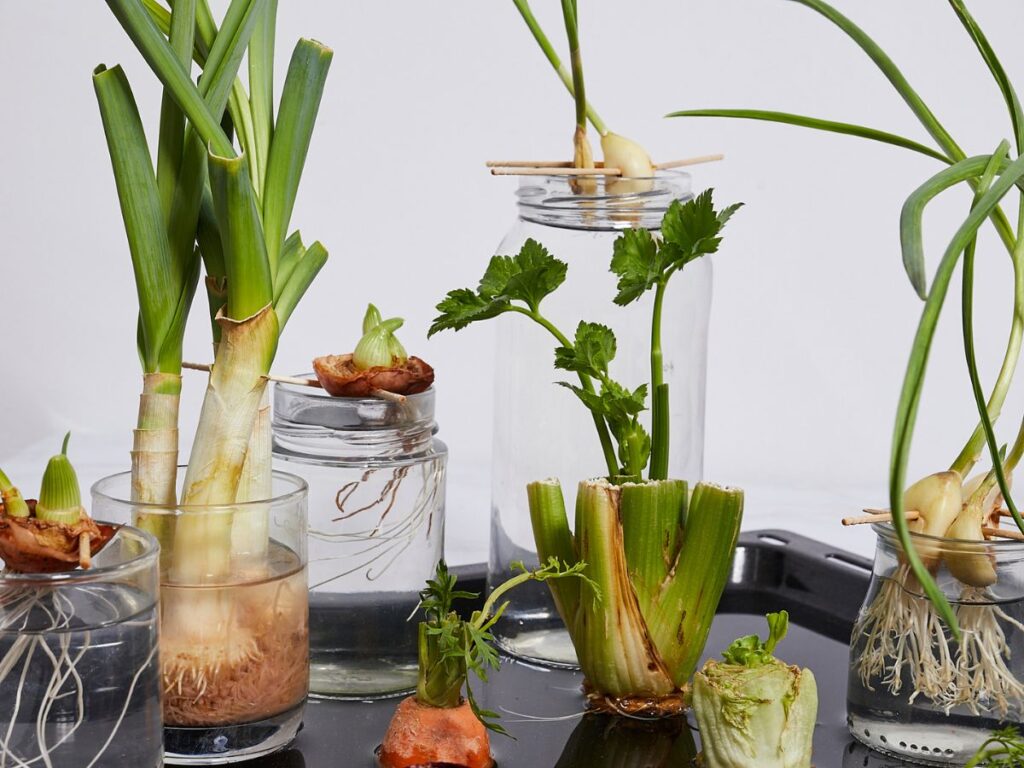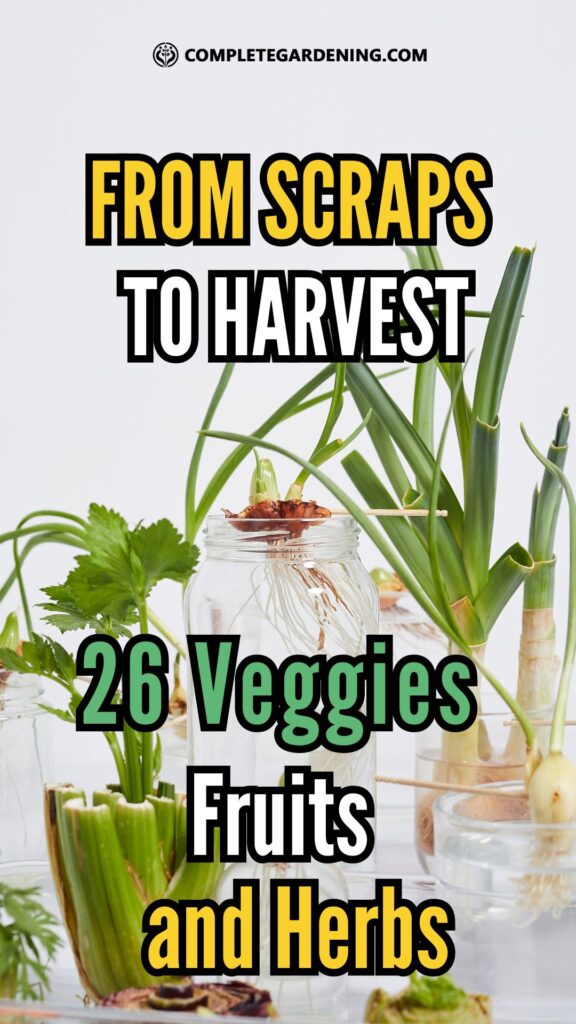Transform your kitchen waste into a green blessing for your home. Imagine the satisfaction of cultivating your own herbs and veggies right from scraps that would otherwise be discarded.
You can regrow a surprising number of vegetables, fruits and herbs with just a few simple steps, offering a sustainable and rewarding way to enjoy fresh produce.
You won’t need special gardening skills or equipment to start this fun and frugal project. With just a windowsill, a bit of water, and sunlight, you’re on your way to nurturing a mini indoor garden.
Regrowing 26 Veggies and Herbs at Home
Not only does this save money and reduce waste, but it also provides the joy of watching life sprout from what seemed to be just leftovers.
Dive into these practical steps and get hands-on with your food waste. You’ll find common favorites like scallions, lettuce, and basil, all ready to dot your kitchen with vibrant greens.
Regrowing from scraps could turn your kitchen into a miniature farm, reconnecting you with nature and your food.
1. Green Onions (Scallions)
Perhaps the easiest of all, green onions almost beg to be regrown. After using the green tops, place the white bulbs with roots intact in a glass of water, submerging just the roots.
Set them on a sunny windowsill, and within days, new green shoots will emerge. Change the water every couple of days to keep it fresh. It’s a near-instant gratification and can be repeated multiple times with the same bulbs.
2. Celery
Celery’s robust base holds the key to new growth.
Cut about two inches from the bottom of a celery bunch and place it in a shallow dish of warm water or use toothpicks around the sides keep the celery from touching the bottom of the bowl, cut side up. Position it in direct sunlight.
After a week, roots and new stalks will begin to appear. At this point, transplant it into soil, burying all but the new growth. With time and care, you’ll cultivate a new bunch of celery.
3. Lettuce
Much like celery, lettuce can spring back to life from its base. Save the bottom two inches and place it in a dish with half an inch of water. Within days, new leaves will sprout from the center.
While it may not form a full head again, the tender new leaves are perfect for salads and sandwiches. Transplanting to soil will encourage more substantial growth.
4. Bok Choy
This Asian green is equally receptive to regrowth. Place the base of bok choy in a shallow dish of water under direct sunlight.
New leaves and roots will appear within a week. Transplant it into soil to allow full development. The regenerated bok choy will be smaller but just as flavorful.
5. Garlic
Each clove of garlic is a seed waiting to sprout. Plant a single clove, root end down, in well-draining soil about two inches deep. Place it in a sunny spot. Over months, the clove will develop into a full bulb, offering multiple new cloves.
The long growing period requires patience, but homegrown garlic boasts a flavor unparalleled by store-bought varieties.
6. Ginger
Ginger root, or rhizome, can regenerate remarkably well. Select a piece with visible “eyes” or growth buds. Plant it in potting soil with the buds facing upward, about an inch deep.
Keep the soil moist and warm, and provide indirect sunlight. New shoots and roots will develop in a few weeks. The plant will mature over several months, providing fresh ginger for your culinary adventures.
7. Potatoes
Those sprouting eyes on old potatoes are signs of life eager to flourish. Cut the potato into pieces, ensuring each has at least one or two eyes. Let them dry out for a day to reduce the risk of rot.
Plant the pieces about four inches deep in well-draining soil. As the plants grow, mound soil around the stems to encourage more tuber formation. Harvesting your own potatoes is a gratifying experience.
8. Sweet Potatoes
Sweet potatoes offer a slightly different regrowing process. Suspend half of a sweet potato in water using toothpicks, with the pointed end submerged. Place it in sunlight.
Slips, shoots that grow from the sweet potato, will appear in several weeks. When the slips are six inches long, detach them and place them in water to develop roots. Once rooted, plant them in soil to grow new sweet potatoes.
9. Onions
Onions can regrow from their root end. Cut off the bottom inch of an onion, leaving the roots intact. Allow it to dry for a few hours, then plant it in soil with the root end down, covering it completely.
You can also regrow onions by placing the cut part with roots in water, while using toothpicks on sides to hold the rest over the water.
Keep the soil moist but not waterlogged. New green shoots will emerge, and over time, the bulb will regenerate.
10. Basil
Basil is one of several herbs that readily regrows from cuttings. Take a four-inch stem from a fresh basil plant, removing leaves from the lower two inches. Place the stem in a glass of water, ensuring no leaves are submerged.
Position it in a spot with ample sunlight. Roots will develop in one to two weeks. Once the roots are substantial, transplant the cutting into soil.
11. Cilantro
Cilantro follows a similar method to basil. Use fresh stems and place them in water with plenty of sunlight.
Be aware that cilantro can be finicky; it may bolt quickly once transplanted due to heat or stress. However, the leaves you harvest before this happens will be a flavorful addition to your dishes.
12. Mint
Mint is almost notorious for its vigorous growth. Place a fresh stem in water, and roots will sprout within a week. Transplant it into a pot to prevent it from overtaking your garden.
Mint’s resilience makes it an excellent candidate for regrowing, and you’ll have a constant supply for teas, desserts, and garnishes.
13. Leeks
Leeks, cousins to the green onion, are just as eager to regenerate. After using the upper green parts, save the bottom two inches of the stalk with the roots attached. Place this base in a shallow dish of water, covering the roots but not submerging the entire piece.
Set it on a sunny windowsill and replace the water every couple of days. New green shoots will begin to sprout from the center. Once robust growth is visible, transplant the leek into soil, where it can continue to mature.
14. Fennel
Fennel’s crisp bulb and feathery leaves are both culinary delights, and the plant can regrow from its base. Keep the bottom inch of the fennel bulb and place it in a dish with water covering the roots.
Position it in a spot with ample sunlight. Within a few days, new green shoots will emerge from the center. For full development, transplant the fennel into soil after a week of water growth.
15. Lemongrass
A staple in many Asian cuisines, lemongrass is surprisingly simple to regrow. If you have stalks with the bulbous ends intact, place them in a glass with about an inch of water. Put the glass in a sunny location and change the water every few days.
Roots will form in about a week, and new growth will appear from the center. Once the roots are substantial, plant the lemongrass in a pot or your garden. It thrives in warm weather and will continue to produce fragrant stalks.
16. Carrot Tops
While you can’t regrow a whole carrot from the top, the leafy greens that sprout are edible and nutritious. Cut off the top inch of a carrot, including the green stub if it’s still attached.
Place the cut side down in a shallow dish of water. Set it in a sunny spot, and in a few days, green shoots will emerge from the top, and small roots may develop underneath. The carrot greens can be used in salads, pesto, or as a garnish.
17. Beet Greens
Similar to carrots, beet tops can be encouraged to grow nutritious greens. Save the top inch of the beetroot and place it in a dish with water covering just the bottom edge.
Position it in sunlight, and soon, vibrant beet greens will sprout. These can be harvested and used much like spinach or Swiss chard, adding a earthy flavor to your dishes.
18. Turnip Greens
Turnip tops can also be regrown to produce leafy greens. Use the same method as with beets and carrots, placing the top inch of the turnip in water and providing adequate sunlight.
The greens that grow are tender and can be sautéed or added to soups and salads.
19. Mushrooms
Regrowing mushrooms requires a bit more attention but can be a rewarding endeavor. Save the stalks with the caps removed.
Plant the stalks in a mixture of soil and compost, burying only the bottom half. Keep the soil moist and place the container in a warm area with indirect light.
Mushrooms prefer humid conditions, so covering the container with perforated plastic wrap can help retain moisture. With patience, new mushroom caps may emerge from the soil.
20. Pineapple
For a tropical addition to your regrowing projects, consider the pineapple. Cut off the leafy top about half an inch below the leaves. Remove some of the lower leaves to expose the base. Allow it to dry for a day or two to prevent rot.
Place the base in water or plant it directly into soil, ensuring it’s well-draining and warm. Pineapples require plenty of sunlight and time, up to two years, but the process is fascinating, and the plant itself is a beautiful addition to your home.
21. Peppers
Bell peppers and chili peppers can be regrown from their seeds. Collect the seeds from a ripe pepper and allow them to dry for a few days. Plant them in seed-starting soil, covering them lightly.
Keep the soil warm and moist, providing plenty of light. Germination takes a couple of weeks. Transplant the seedlings into larger pots or your garden when they’re sturdy enough.
While this method starts from seeds rather than scraps, it makes use of parts often discarded.
22. Tomatoes
Tomato seeds can be harvested and planted much like pepper seeds. Scoop out the seeds and rinse them to remove the gelatinous coating. Dry them thoroughly before planting in seed-starting mix.
Provide warmth and light, and keep the soil moist. Once the seedlings have developed several true leaves, they can be transplanted. Growing tomatoes from seed allows you to cultivate a variety of heirloom or favorite types.
23. Pumpkins and Squash
Seeds from pumpkins and squash are often thrown away but can be the start of new plants. Clean and dry the seeds before planting them about an inch deep in fertile soil.
These plants require space and plenty of sunlight, so they’re best suited for outdoor gardens. Watching a seed transform into a sprawling vine bearing fruit is a rewarding experience.
24. Herbs from Cuttings (Rosemary, Sage, Oregano, Thyme)
Many woody herbs can be propagated from cuttings. Take a 4-6 inch cutting from a healthy plant, preferably just below a node where leaves emerge. Remove the lower leaves to prevent rot and place the stem in water.
Keep it in a warm spot with indirect sunlight. Roots will develop over several weeks. Once they’re well-established, transplant the cutting into soil. This method not only recycles kitchen scraps but also ensures a steady supply of fresh herbs.
25. Avocado
The avocado pit can be coaxed into growing a new tree. Clean the pit and suspend it over a glass of water using toothpicks, with the broad end submerged. Place it in a warm location out of direct sunlight and change the water regularly.
In several weeks, the pit will crack, and roots will grow downward as a stem emerges upward. When the stem reaches about six inches, cut it back to encourage growth.
Once a robust root system has developed, plant it in soil. While it may take years to bear fruit, the avocado plant makes an attractive houseplant.
26. Apple Seeds
Apple seeds can be planted to grow new apple trees, though they may not produce fruit identical to the parent due to cross-pollination.
Remove seeds from the core, clean them, and perform a process called stratification, placing them in a damp paper towel inside a plastic bag in the refrigerator for several weeks.
This mimics winter conditions and prompts germination. After stratification, plant the seeds in soil and provide ample light. Growing an apple tree is a long-term project but can be a fulfilling one.
From Scraps to Harvest
Embracing the practice of regrowing vegetables and herbs from kitchen scraps offers more than just a supplemental source of fresh produce; it fosters a deeper connection with the natural world and promotes sustainable living.
These small acts of nurturing discarded remnants into thriving plants highlight the incredible resilience of nature and our role within it.
Whether you’re an experienced gardener or a curious beginner, starting a regrowing project can bring joy, reduce waste, and inspire a greater appreciation for the food we consume.
So, before you toss those kitchen scraps, consider the potential they hold, not just for your garden, but for cultivating a more mindful and sustainable lifestyle.
